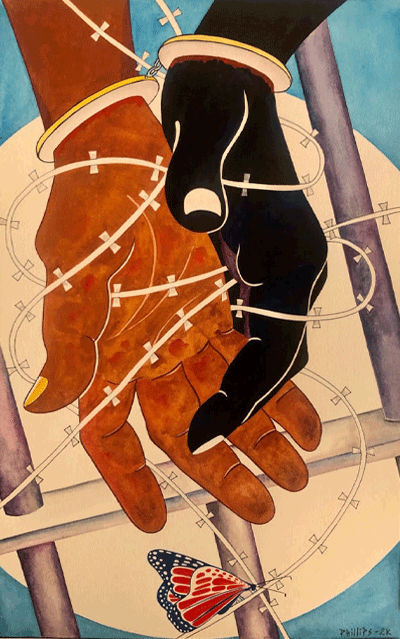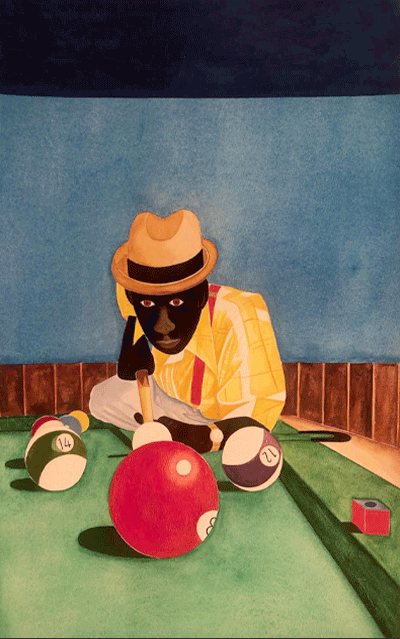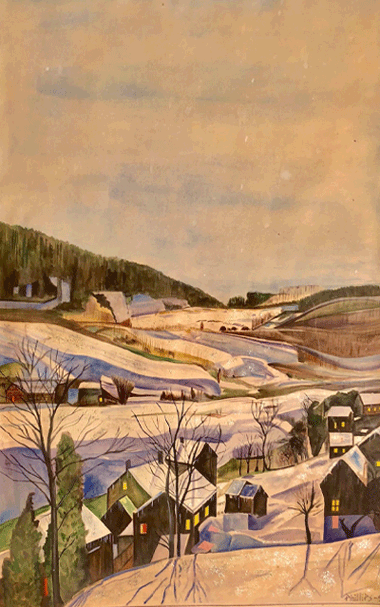Richard Phillips found his calling in prison.
Phillips was arrested in October 1972, at 27 years old. He was charged with armed robbery. On a brisk September day in 1971, two men – one white, one black – entered a convenience store in Detroit. The white man held a gun and demanded money; the black man stood near the door. In the end, the white man and his accomplice made off with $10 dollars. The instigator was later identified as Richard Palambo, or “Dago” – a prison buddy of Fred Mitchell, one of Phillip’s close friends. Mitchell and Phillips were arrested shortly after. On the stand, Palambo refused to identify his accomplice. The judge ordered a recess.
Phillips’ lawyer asked: “Is your silence because you did not wish to incriminate someone else?”
“Yes,” Palombo replied.
In the end, despite a witness who provided inconsistent testimony, Phillips was arrested. Later, in March of 1972, Phillips was implicated in another crime: the murder of 21-year old George Harris. Harris disappeared sometime in June 1971, when he left home to buy cigarettes. His car was found the next day, with strange bloodstains on the seats. According to CNN, Harris’ mother received a phone call from an anonymous woman who said: “I can’t hold it any longer, a Fred Mitchell and a guy named ‘Dago’ took your son out of a car at LaSalle Street. They shot him in the head and killed him. They then took him out near 10 Mile Road and tossed him from (the) car.” What the police did with this information is unclear. Harris’ body was discovered on March 3rd, 1972 by a repairman.
Days later, Mitchell was arrested on an unrelated charge. He told police he had information related to Harris’ death. There was no physical evidence connecting Phillips to the crime, but Mitchell’s testimony was enough for the state of Michigan to persuade the jury that Phillips was a murderer. Phillips was found guilty on two counts of conspiracy to murder and first-degree murder. He spent 46 years in prison for a crime he didn’t commit.

Today, experts say that Phillips has “spent more years behind bars than any other wrongfully imprisoned person in America.” To keep hope alive, Phillips turned to poetry and painting. He started out small, with gorgeous, hand-crafted postcards he’d sell to his fellow inmates. To survive prison, Phillips made a schedule: when his cellmate left in the early morning, he would turn on John Coltrane or Miles Davis and paint. His style drew from the bright, colourful images he glimpsed in newspapers and magazines. To improve, he read books on Van Gogh, Picasso, and Da Vinci. Combined with his powerful imagination, he created vivid scenes that sparked hope. One is a small town in winter; another is a man in bright red overalls playing pool. Another shows two dark hands, trapped by handcuffs and framed by wires.

During his incarceration, Phillips painted over 400 works and wrote several poems. They piled up along his cell, bright colours a stark contrast to beige and grey. Phillips sent them to his pen pal in New York, Doreen Cromartie; and she kept them, hoping that one day, Phillips would collect them in person.
Before his death in 2020, Palombo revealed to prosecutors who really killed Harris: Mitchell. His confession was enough to kick start the appeals process, and Phillips was eventually released in 2018. Today, his paintings reflect his newfound freedom: Sunshine Ceremony illustrates a traditional Japanese tea ceremony. The windows are open, the sunset draws long shadows across the room. Steps to Nepal shows a hunched man in a sun-set coloured city. Sayonara depicts a woman with an orchid; Scientific Flotations shows a fictional boating community in varying shades of blue. Phillips now has the time and resources to paint the strange and unfamiliar. He is free.

While Phillips is entitled to $1.5 million from the state, the process is slow-moving. It will take years for lawmakers to approve. In the meantime, Phillips has a website where he sells his paintings. It’s his only form of income. Despite the hardships, Phillip’s attorney, Gabi Silver, notes that the experience hasn’t made him bitter. She described him as “one of the warmest, kindest, most considerate” people she’s ever met.
For more information, visit http://richardphillipsartgallery.com/
